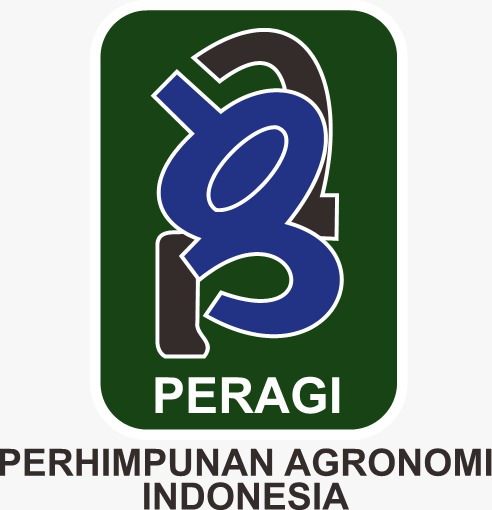Effectiveness of Palm Empty Fruit Bunch Liquid Smoke Against Stem Base Rot Pathogen Oil Palm Plants in In-Vitro
Abstract
Ganoderma species significantly threaten oil palm cultivation, leading to substantial plant mortality. To mitigate the impact of Ganoderma, the application of fungicides has been a common practice. However, the prolonged use of these chemical agents poses risks to environmental sustainability. Consequently, there is a pressing need for alternative, eco-friendly solutions, one of which is using liquid smoke derived from empty oil palm bunches (TTKS). This study aims to determine the effective concentration of liquid smoke from empty oil palm bunches in inhibiting the growth of Ganoderma species. The research was conducted at the Integrated Laboratory of the Faculty of Agriculture, Pasir Pengaraian University, from November 2023 to January 2024. An experimental methodology was employed, utilizing a completely randomized design (CRD) that included six treatment groups with three replications each. The total phenol content was analyzed using the Folin-Ciocalteau method using the Smart Spectro tool. The growth rate of Ganoderma colonies was measured using a ruler, applying a formula based on the Crueger formula (1984) as referenced in Pulungan (2022). The effectiveness of the inhibitory action was calculated using the formula provided by Rakesh (2013). Data analysis was conducted descriptively, followed by statistical tests of variance (ANOVA). The findings of this study indicate that TTKS liquid smoke contains active compounds capable of inhibiting the growth of Ganoderma species, specifically phenol, at a concentration of 2.12 mg/L. The application of TTKS liquid smoke demonstrated 100% effectiveness in inhibiting the growth of Ganoderma in Treatment G3 at a concentration of 3%, followed by G4 at 4% and G5 at 5%.
Downloads
References
Aisyah, I. (2013). Potensi asap cair tempurung kelapa, buah pinus, dan pelepah kelapa sawit dalam menghambat pertumbuhan Blood Disease Bacterium secara in vitro (Tesis). Institut Pertanian Bogor, Bogor.
Agustina, L. (2016). Karakteristik serat tandan kosong kelapa sawit (TKKS) dengan perlakuan perebusan dan pengukusan. Jurnal Ziraa’ah.
Angraini, E. (2017). Uji antagonisme Lentinus cladopus LC4 terhadap Ganoderma boninense penyebab penyakit busuk pangkal batang kelapa sawit. Jurnal Biosfera.
Asmawit, Hidayati, & Supriyatna, N. (2016). Karakteristik destilat asap cair dari tandan kosong kelapa sawit. Jurnal Majalah Biam.
Chong, K. P., Dayou, J., & Alexander, A. (2017). Detection and control of Ganoderma boninense in oil palm crop. Journal Springer Briefs in Agriculture.
Fitriani. (2010). Pengendalian hayati patogen busuk akar (Ganoderma sp.) pada Acacia mangium dengan Trichoderma sp. isolat lokal secara in vitro. Jurnal Hutan Lestari.
Harianti, et al. (2011). Karakterisasi asap cair tandan kosong kelapa sawit yang diabsorpsi dengan zeolit teraktivasi asam. Pontianak: Jurnal Universitas Tanjung Pura.
Himawati. (2010). Pengaruh penambahan asap cair tempurung kelapa destilasi dan redestilasi terhadap sifat kimia, mikrobiologi, dan sensoris ikan pindang layang (Decapterus sp.) selama penyimpanan (Skripsi). Program Studi Teknologi Hasil Pertanian, Universitas Sebelas Maret, Surakarta.
Oramahi, H. A., Diba, F., & Wahdina. (2010). Efikasi asap cair dari tandan kosong kelapa sawit (TKKS) dalam penekanan perkembangan jamur Aspergillus niger. Jurnal HPT Tropika.
Pulungan, M. S. (2022). Uji efektivitas asap cair pelepah kelapa sawit untuk mengendalikan Curvularia sp. dan Cercospora sp. secara in vitro. Jurnal Fapertapet UIN SUSKA Riau.
Purnamasari, M. I. C. (2020). Isolasi dan identifikasi secara molekuler Ganoderma sp. yang berasosiasi dengan penyakit busuk pangkal batang di kelapa sawit. Jurnal Fitopatologi.
Rakesh, R., Jos, B. C., & Mathew, G. (2013). FMEA analysis for reducing breakdowns of a subsystem in the life care product manufacturing industry. International Journal of Engineering Science and Innovative Technology.
Sari, Y. P. (2018). Identifikasi mutu asap cair hasil pirolisis limbah tandan kosong kelapa sawit. Jurnal Agroqua
Copyright (c) 2024 Fitra Widi Setiawan, Yuliana Susanti, Al Muzafri

This work is licensed under a Creative Commons Attribution 4.0 International License.
Authors who publish with Jurnal Agronomi Tanaman Tropika (JUATIKA) agree to the following terms:
Authors retain copyright and grant the Jurnal Agronomi Tanaman Tropika (JUATIKA) right of first publication with the work simultaneously licensed under a Creative Commons Attribution License (CC BY 4.0) that allows others to share (copy and redistribute the material in any medium or format) and adapt (remix, transform, and build upon the material for any purpose, even commercially) with an acknowledgment of the work's authorship and initial publication in Jurnal Agronomi Tanaman Tropika (JUATIKA).
Authors are able to enter into separate, additional contractual arrangements for the non-exclusive distribution of the journal's published version of the work (e.g., post it to an institutional repository or publish it in a book), with an acknowledgment of its initial publication in Jurnal Agronomi Tanaman Tropika (JUATIKA). Authors are permitted and encouraged to post their work online (e.g., in institutional repositories or on their website) prior to and during the submission process, as it can lead to productive exchanges, as well as earlier and greater citation of published work.







 More Information
More Information



